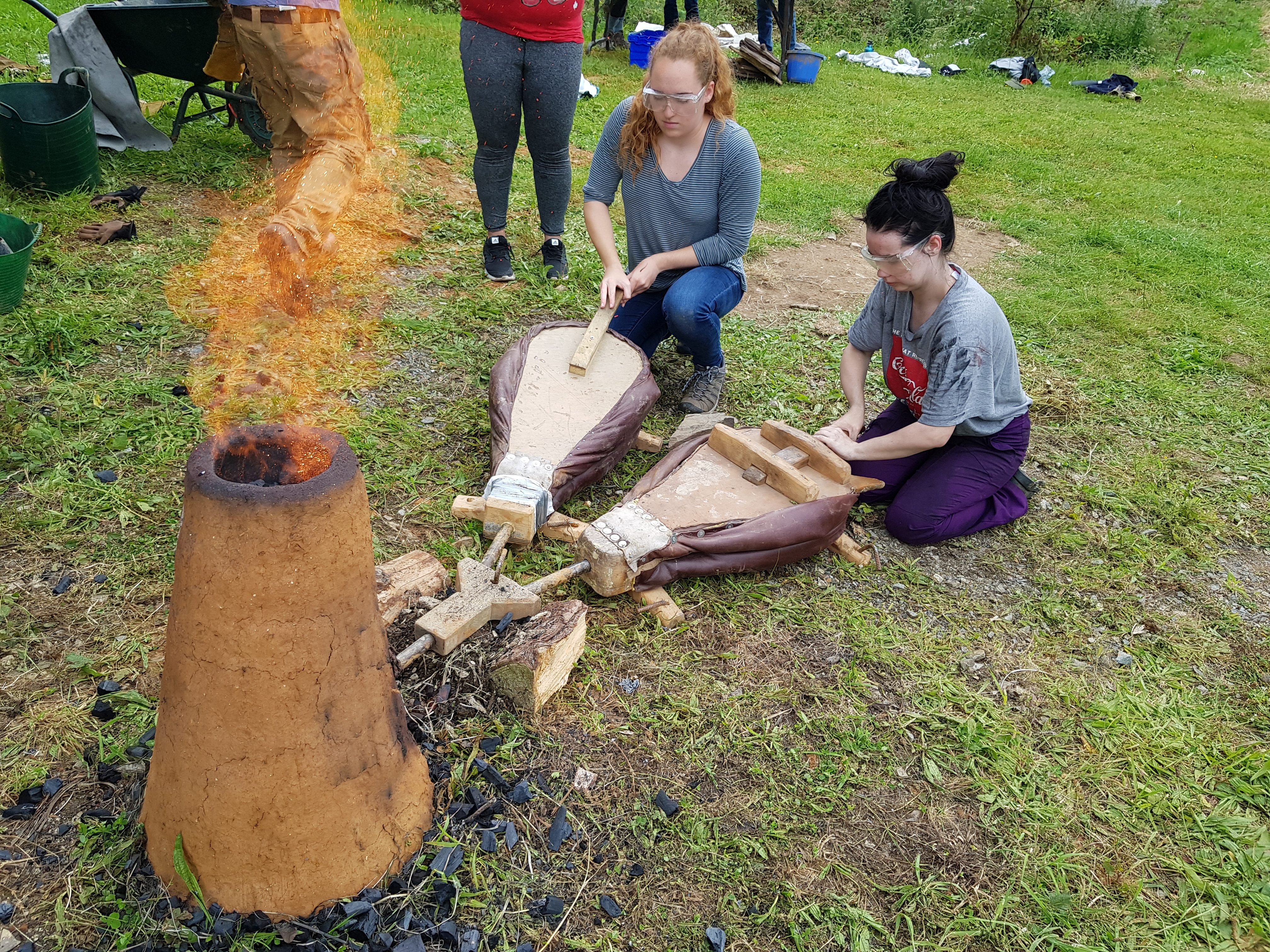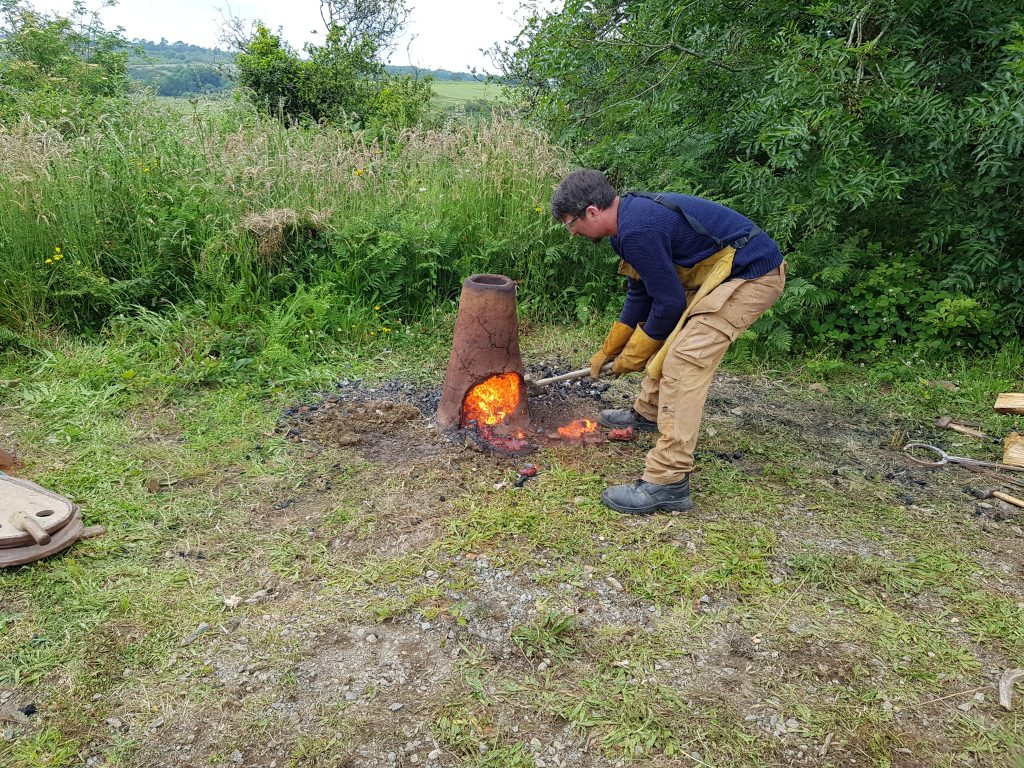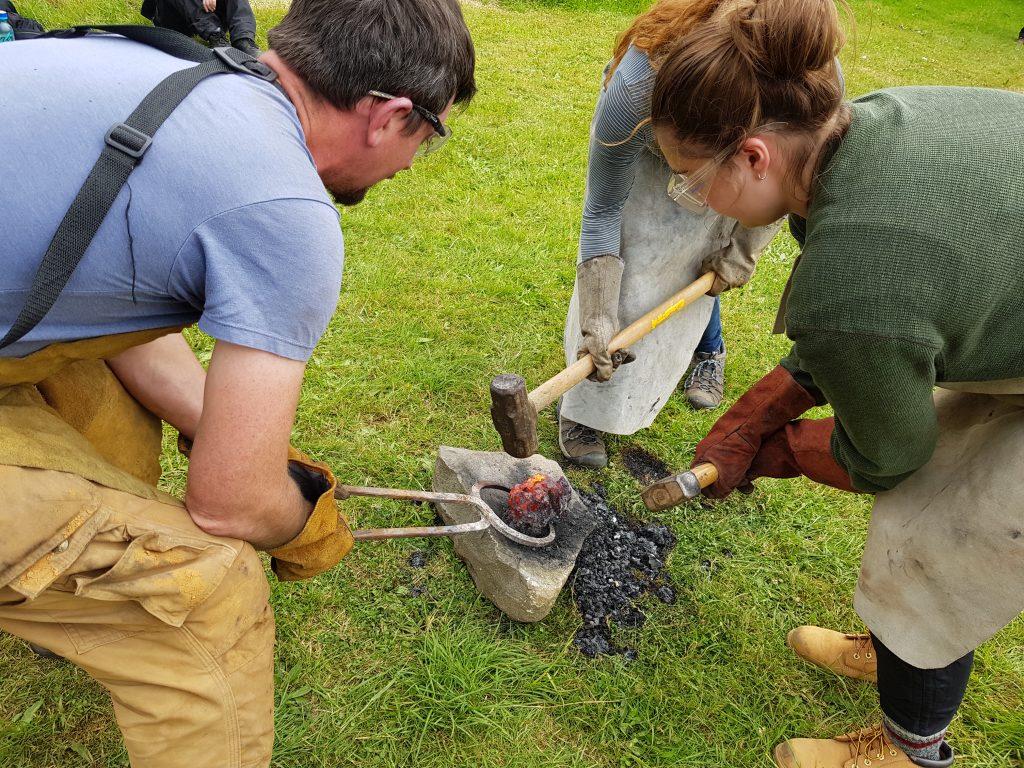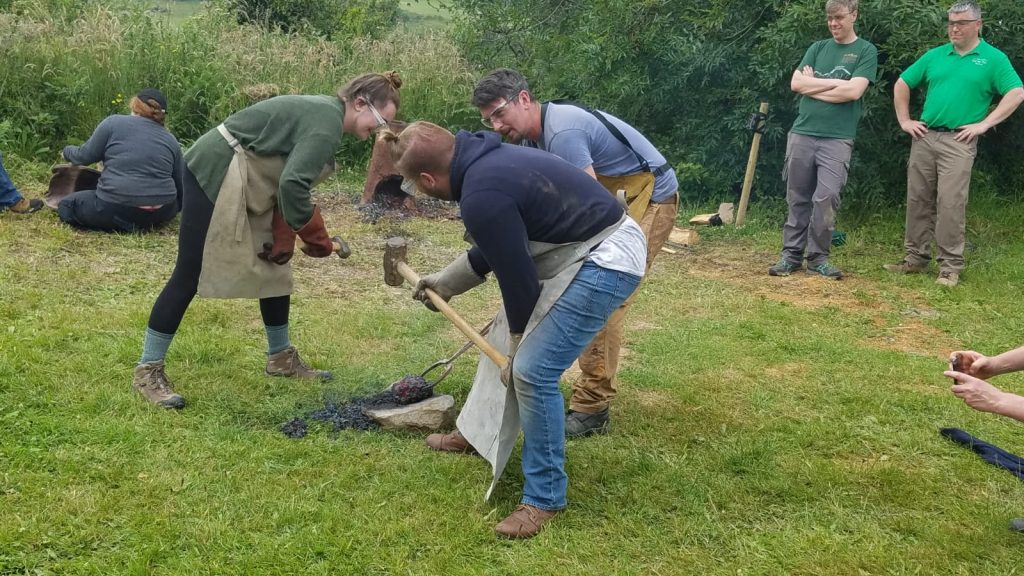August 23, 2019
by Gwyneth Evans (IAFS intern 2019)




This summer saw a new program at the Carrick site. The IAFS partnered with Dr. Brendan O’Neill from University College Dublin to run an experimental archaeology program at the Carrick Centre. It was a two-week long program that allowed us to learn about experimental archaeology, and relate what we learned back to the Carrick excavation itself.
The first week was mainly focused on building a furnace and using it to smelt iron. This was interesting to all on site because we have a burnt feature in Cutting 1 that is interpreted as a furnace. After initially building the furnace, the students started smelting. To do this, they heated the furnace with a wood fire and bellows, and then processed iron ore and melted it together into one piece. Once the iron ore was sufficiently heated, they pulled it from the furnace and condensed the ore into useable iron. As they hammered it, pieces of the heated ore would fall off – these pieces are called slag. This was interesting to see and learn more about because we’ve found a lot of similar looking slag pieces near the furnace in Cutting 1.
When I talked to students about their experience, they all seemed to be learning a lot and enjoying themselves. One student, Liam Gardiner, mentioned that “the slag was probably the coolest part” because it allowed him to connect what he saw and learned back to artefacts found on a previous field school. Another student, Shannon Cheski, noted that they “had a rotation system in which each person helped with the bellowing, “and that it was “extremely labour intensive” but “overall it was an incredible experience to learn how to make and use a clay furnace in order to do iron metal working.”
After the students were done using the furnace, we had the opportunity to examine what remained. Brendan explained that the remains of a furnace would leave a charred semicircle and charcoal marks or evidence of collapse in the form of red oxidized marks around the furnace. After examining this and relating it to the burnt area in Cutting 1, we can more definitively say that we’ve found a furnace on site. It was great to be able to make this connection and use experimental archaeology to learn more about our own site!
This blog describes the IAFS’s experimental archaeology programme in partnership with University College Dublin and Institute for Field Research. For more details or if you are interested in participating visit: iafs.ie/experimental-archaeology-and-materiality-of-the-medieval-period-in-ireland